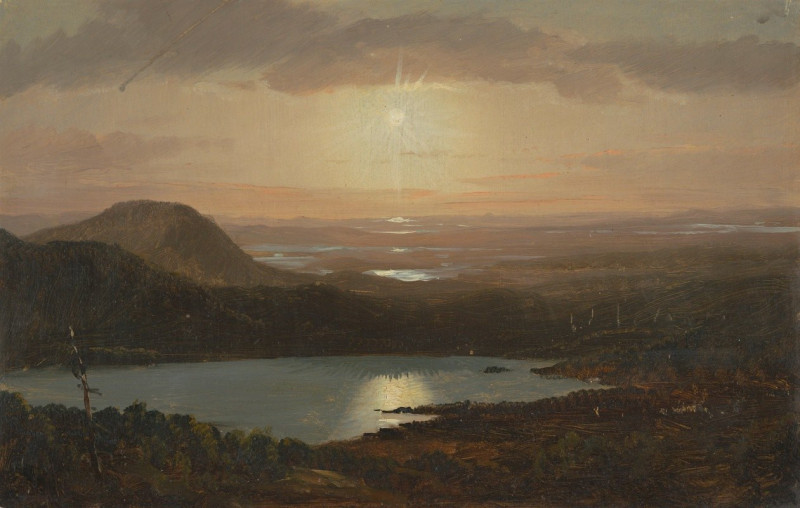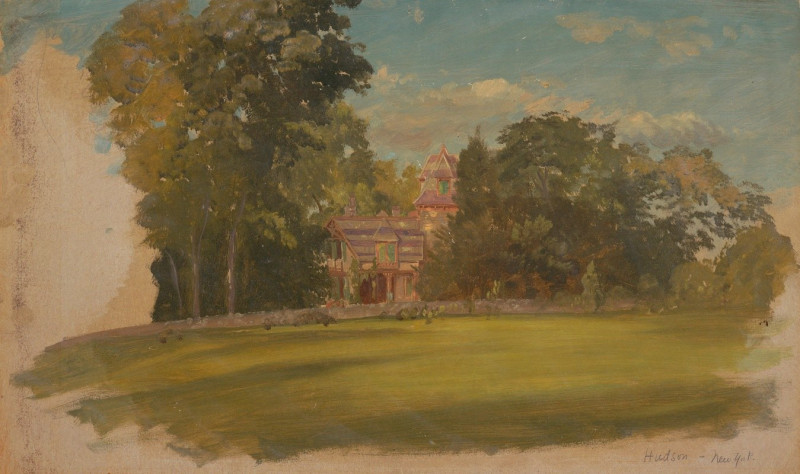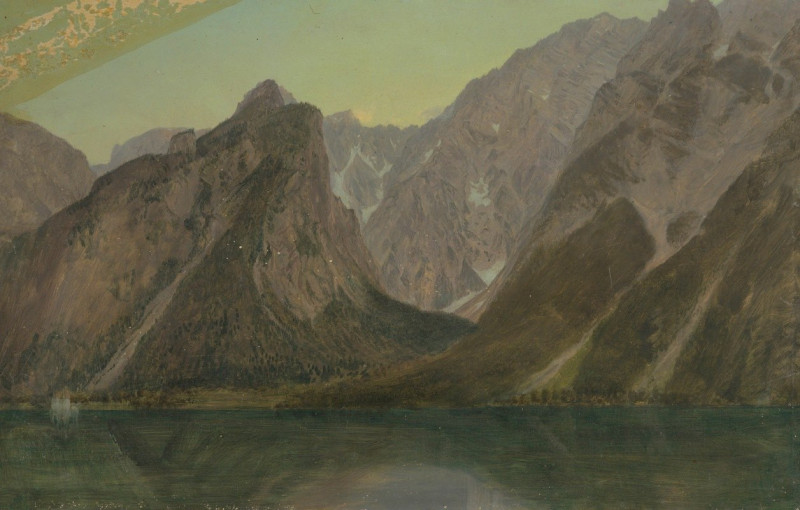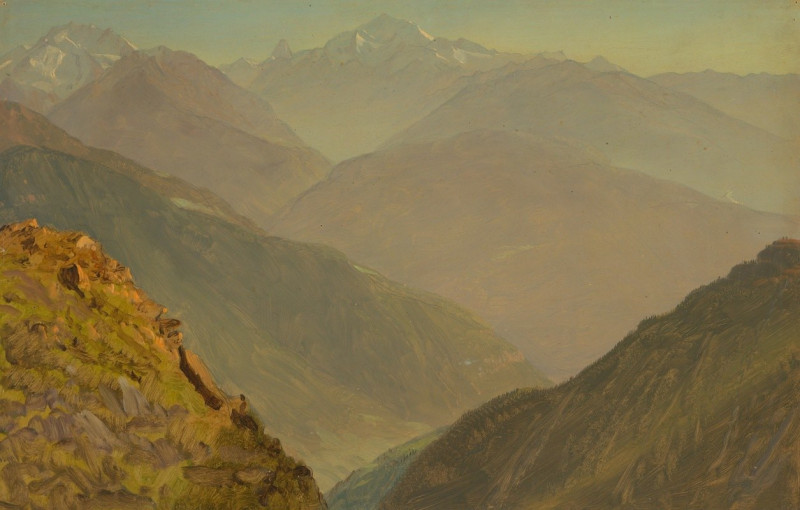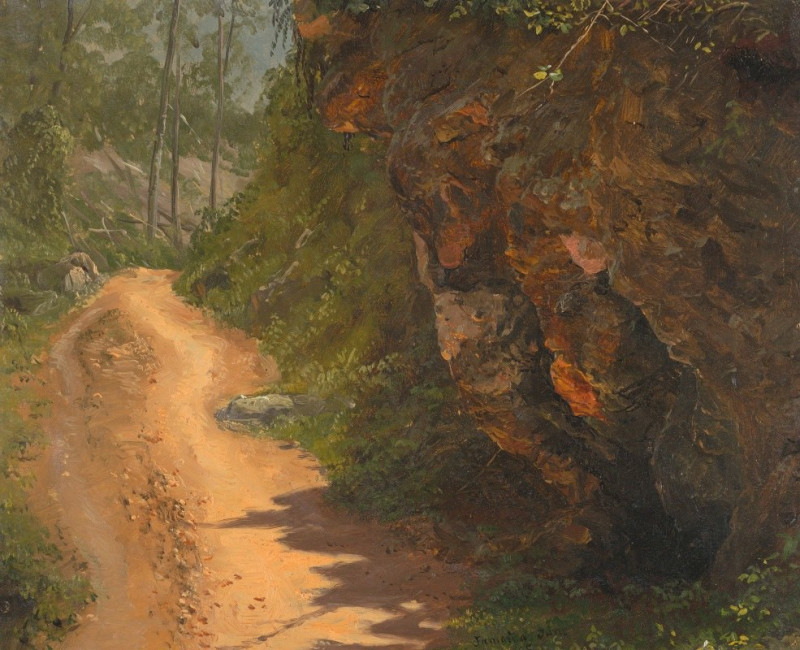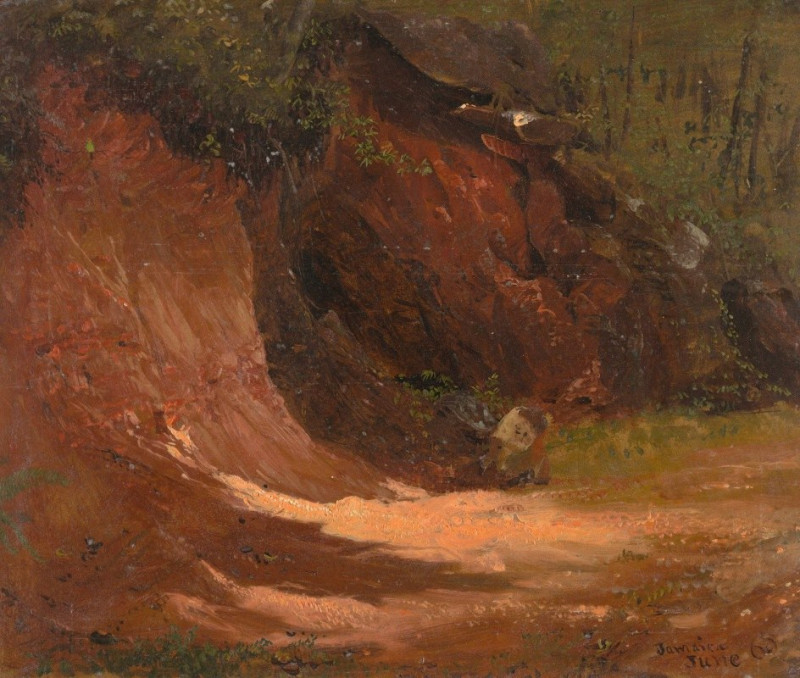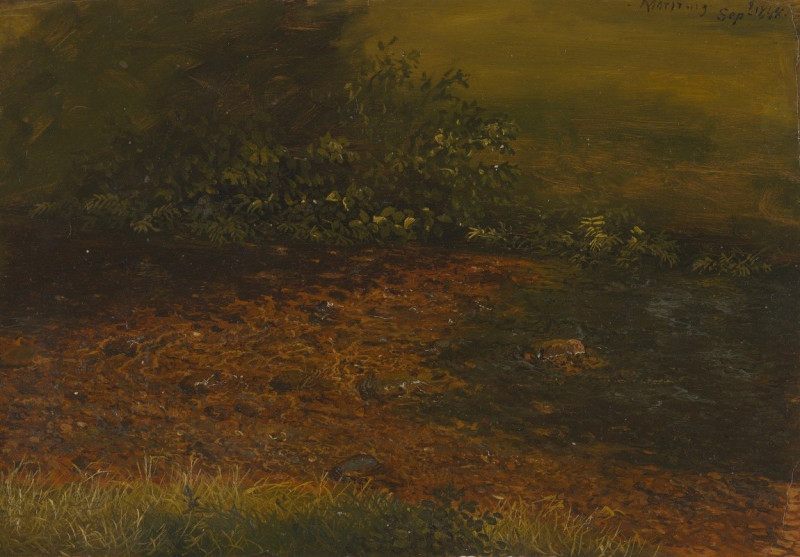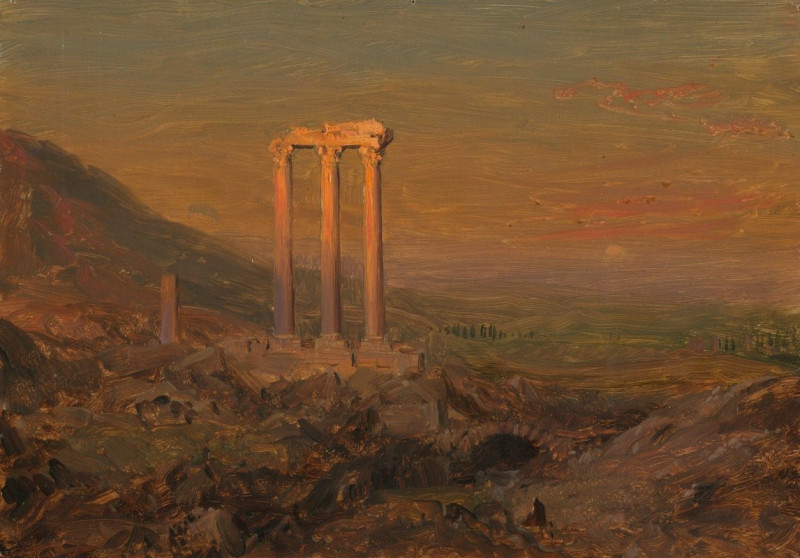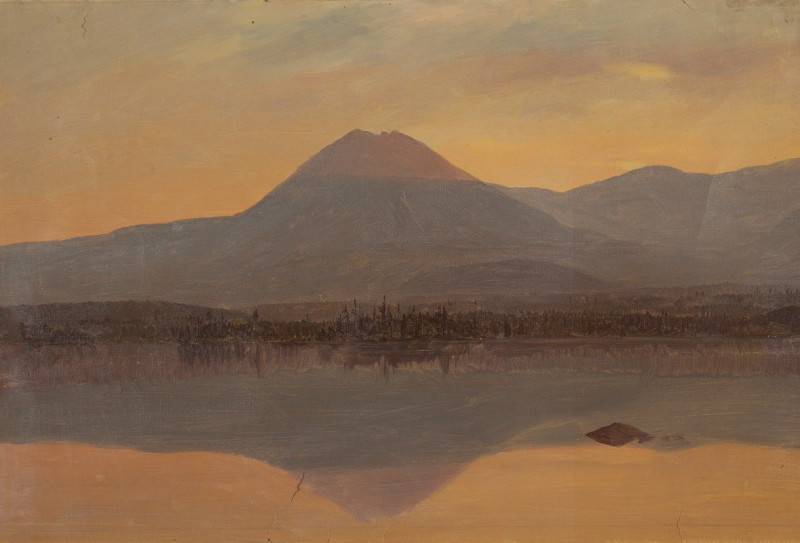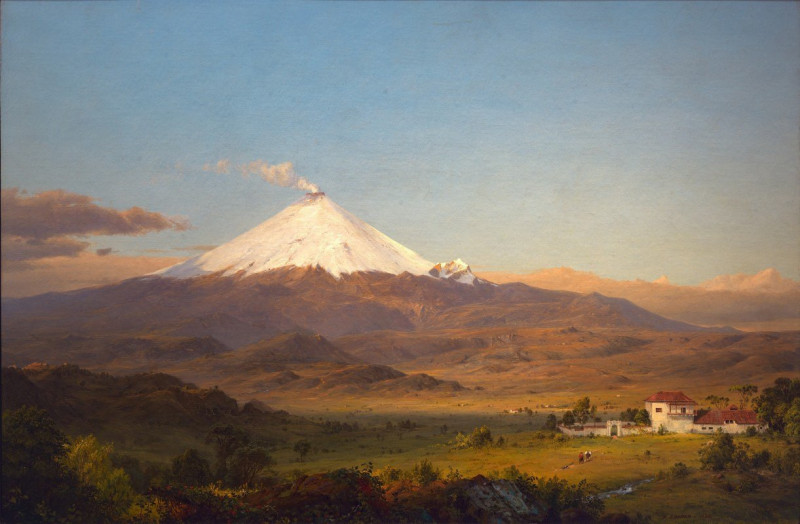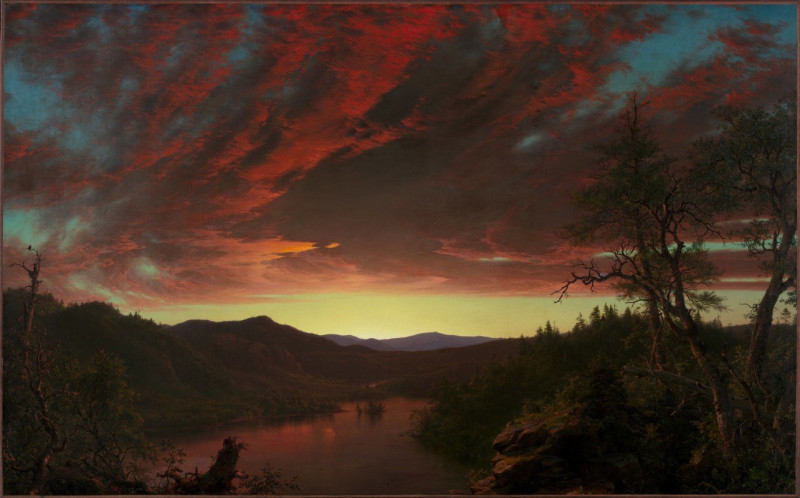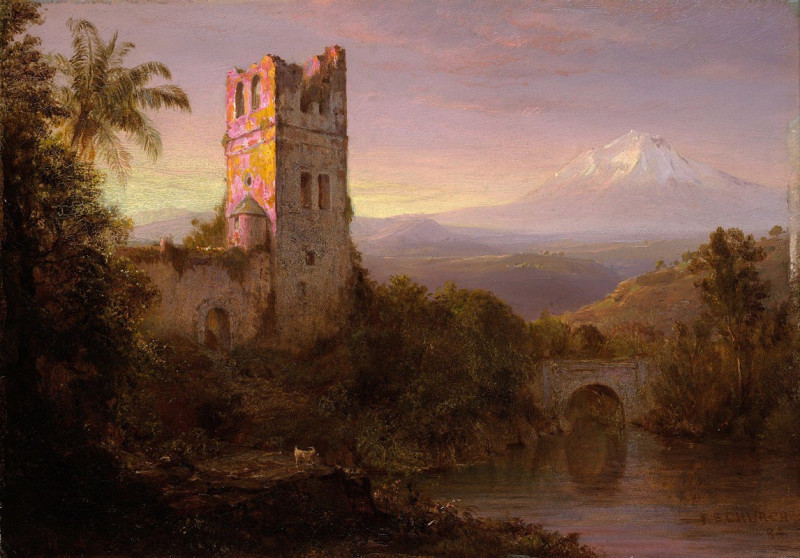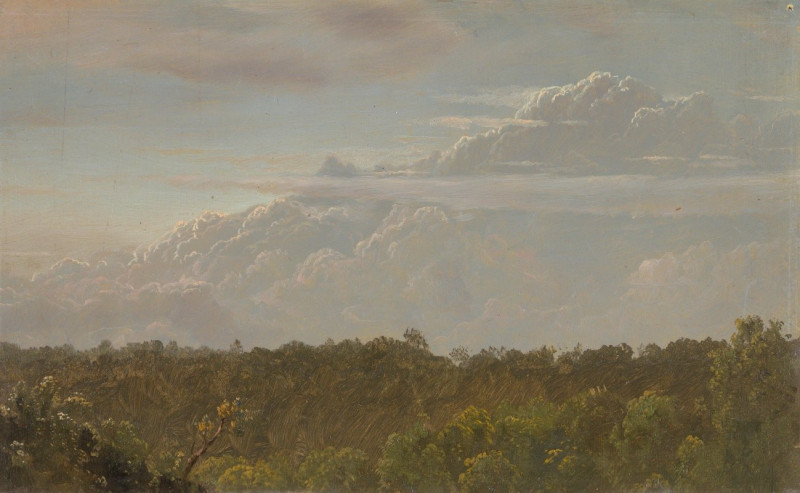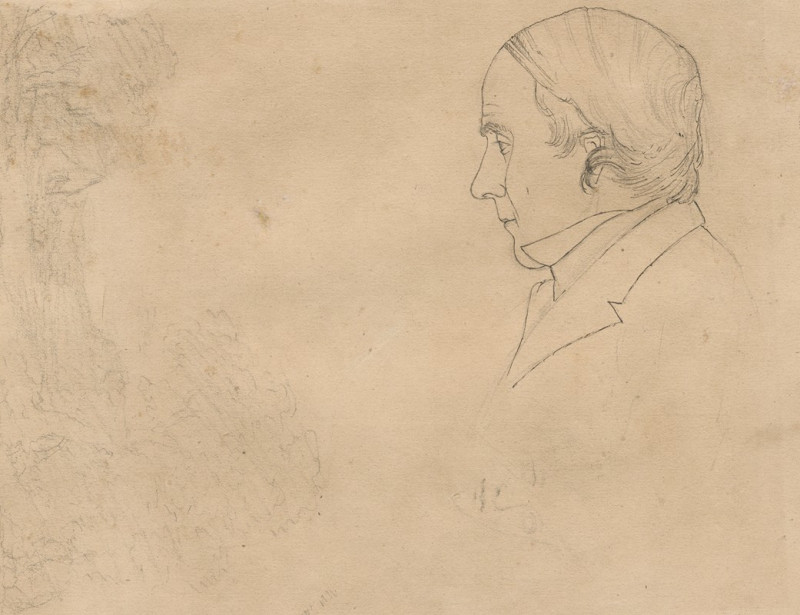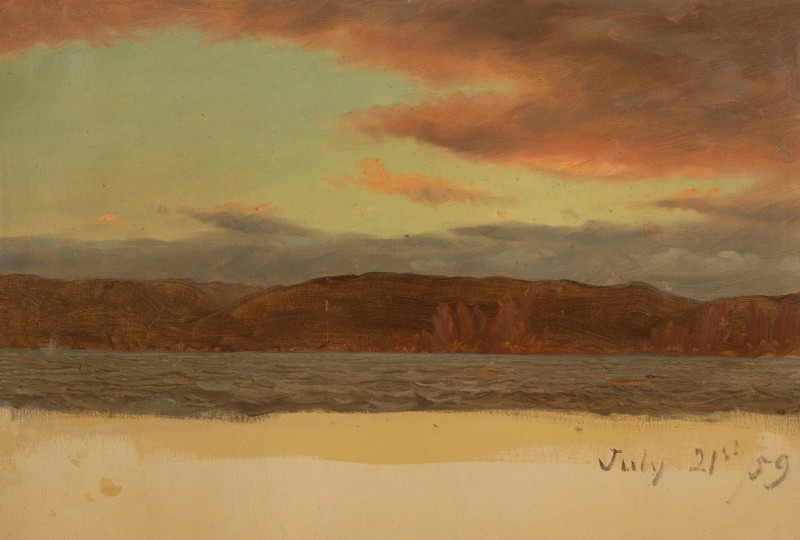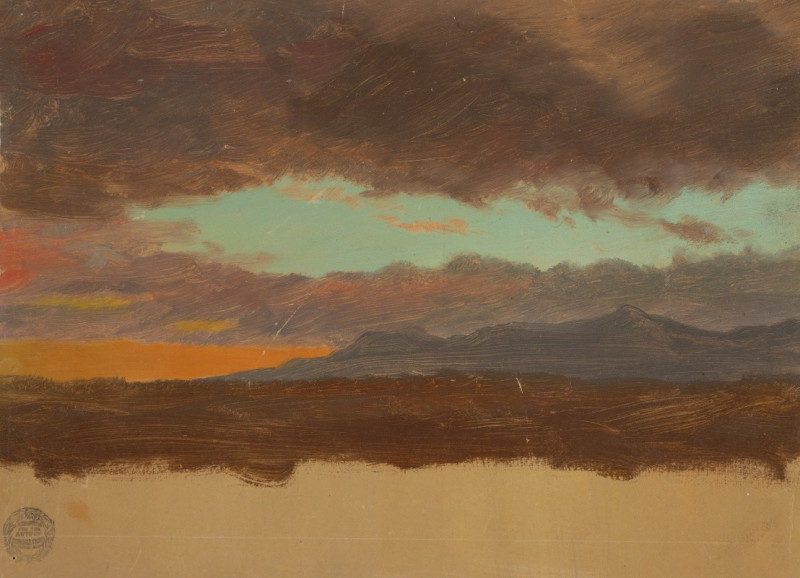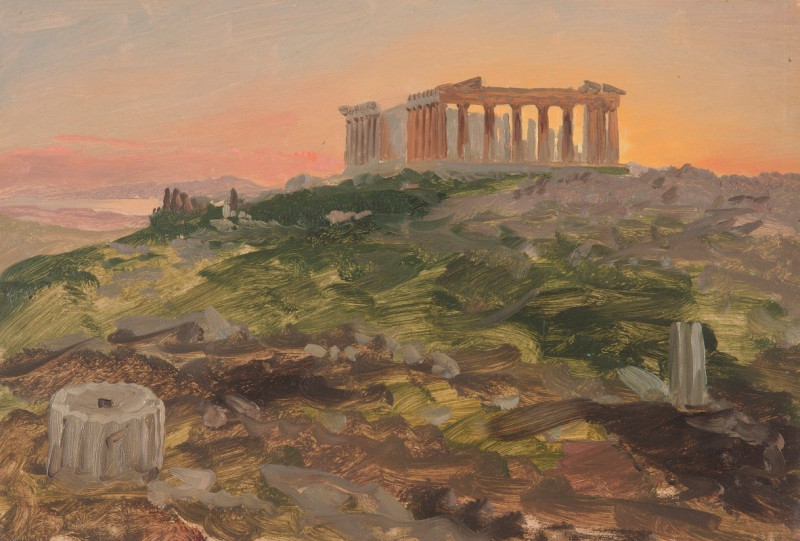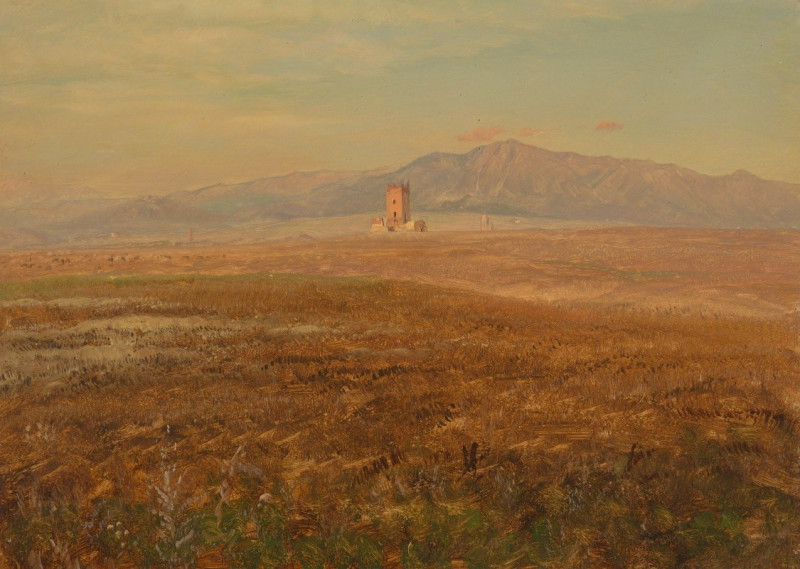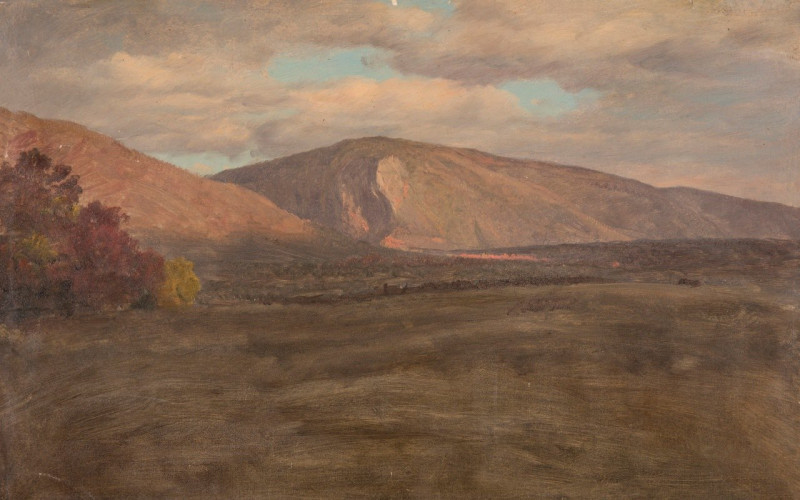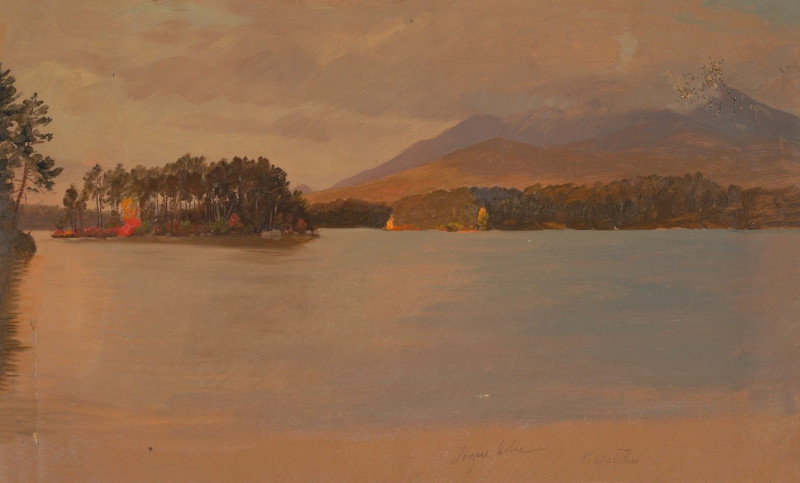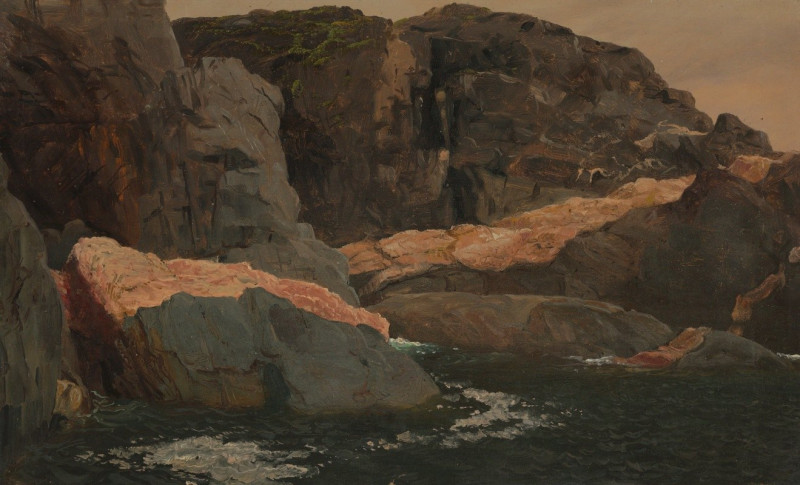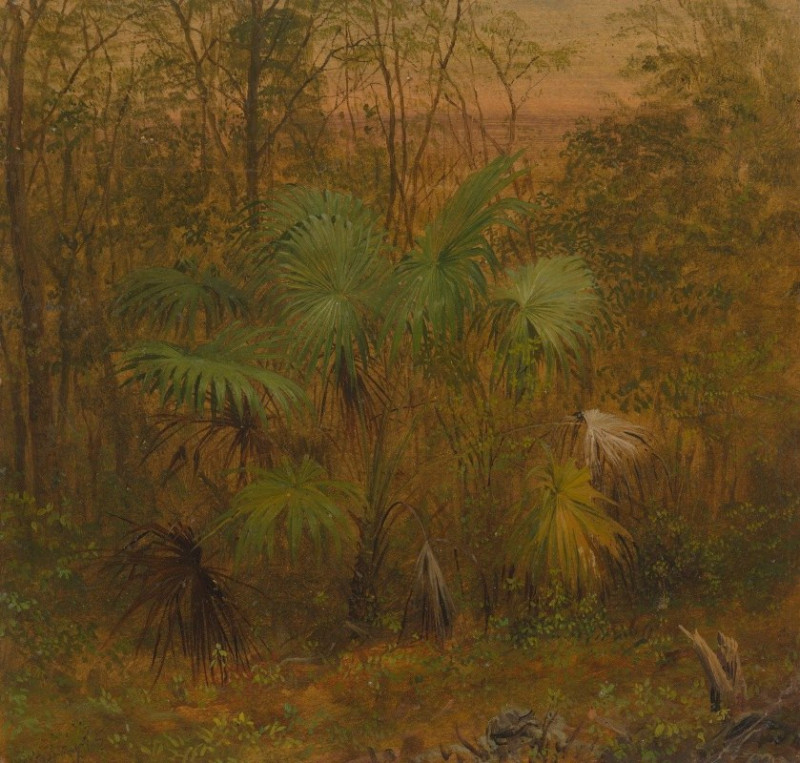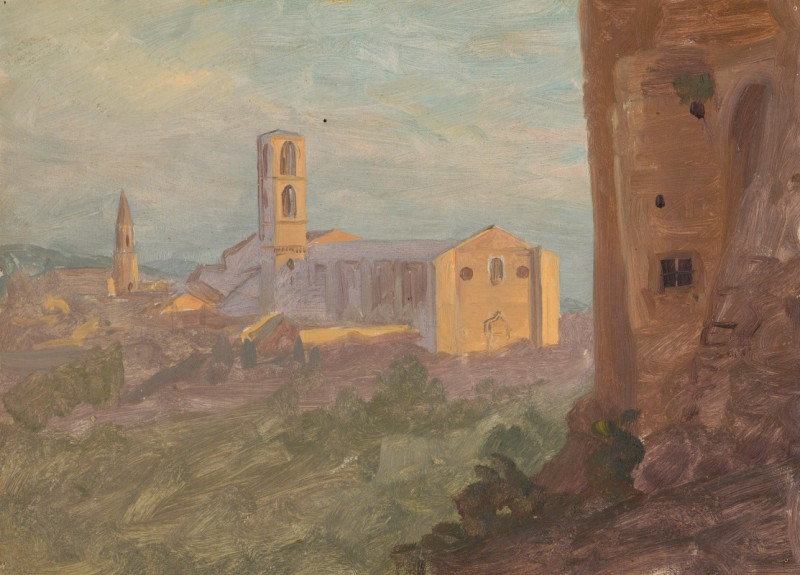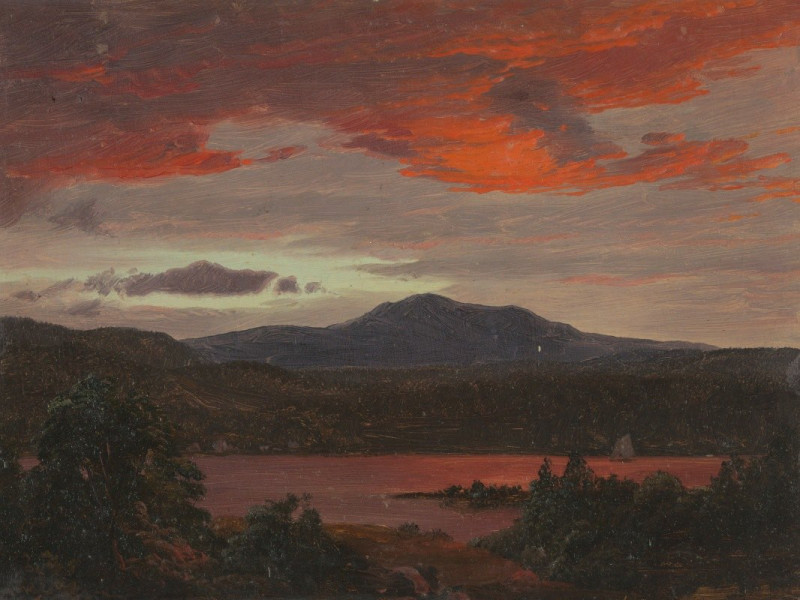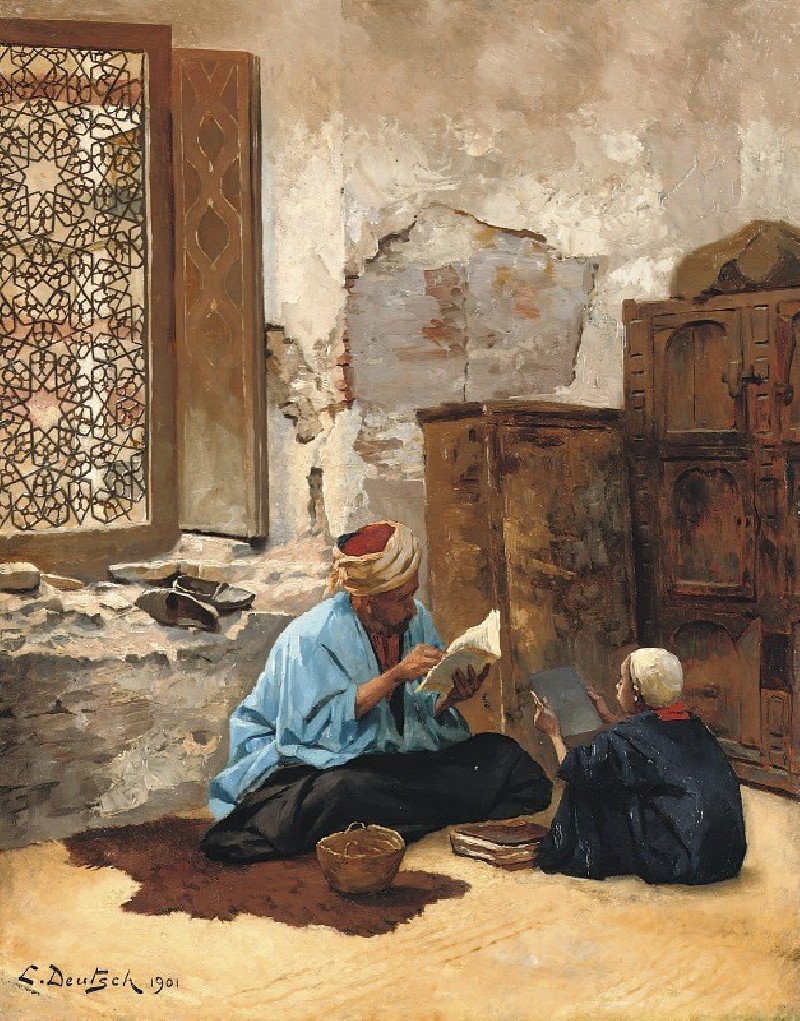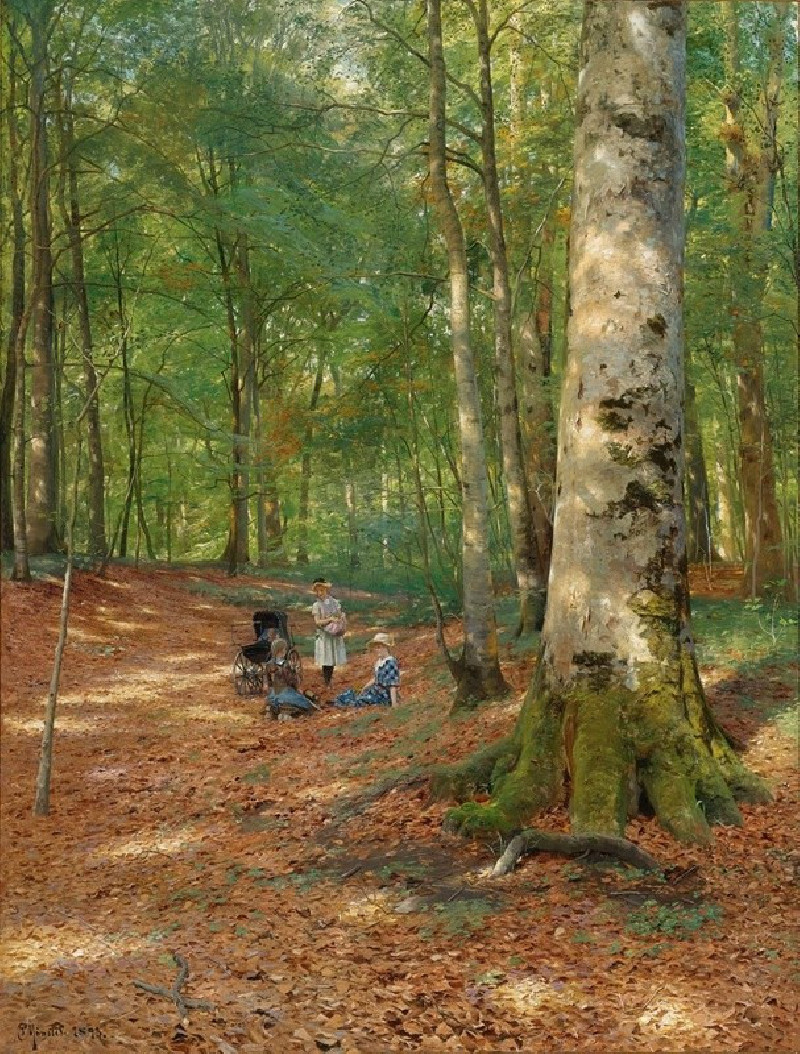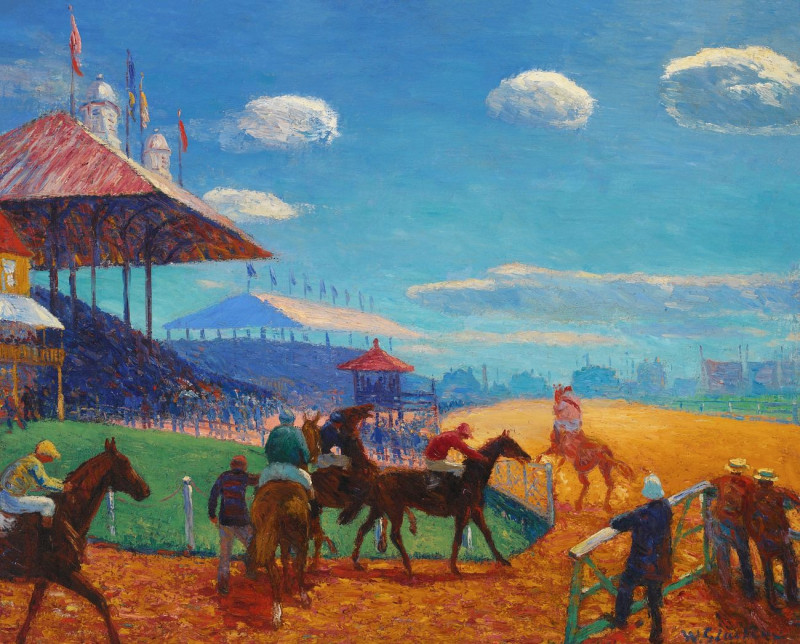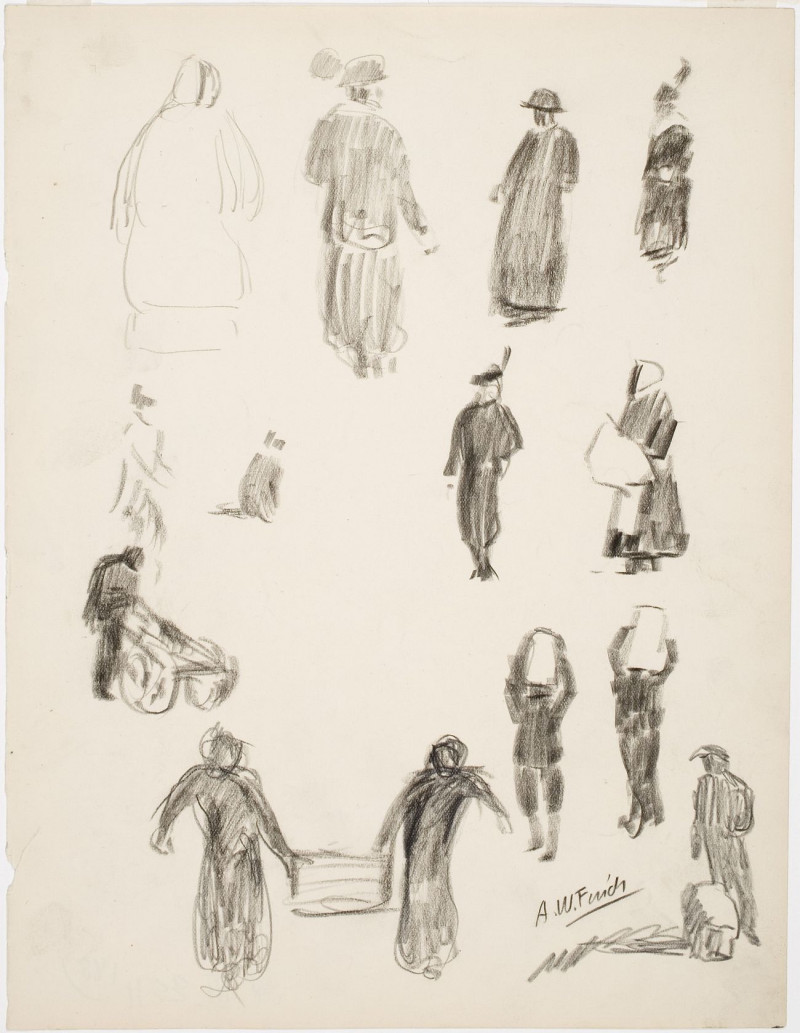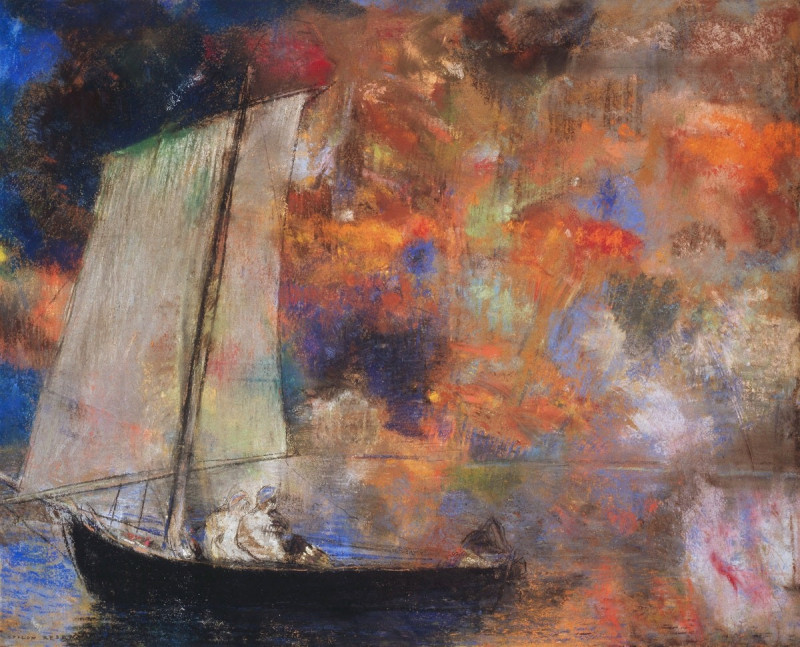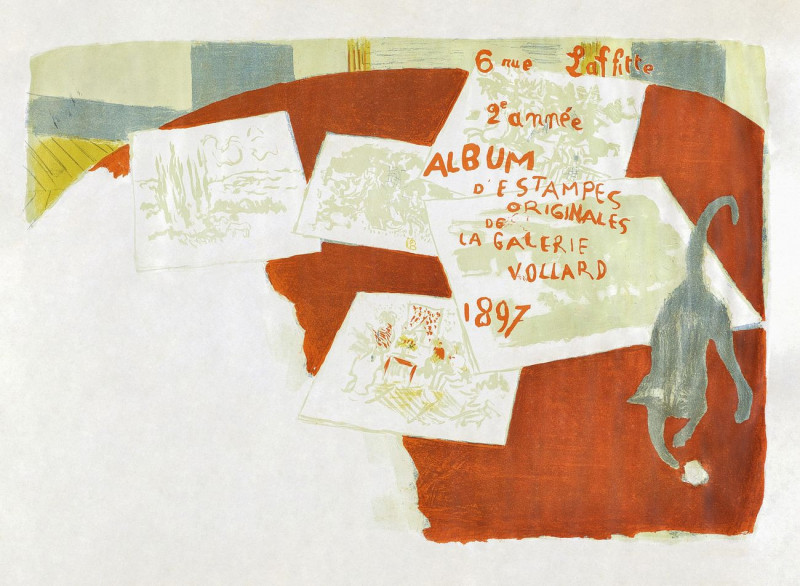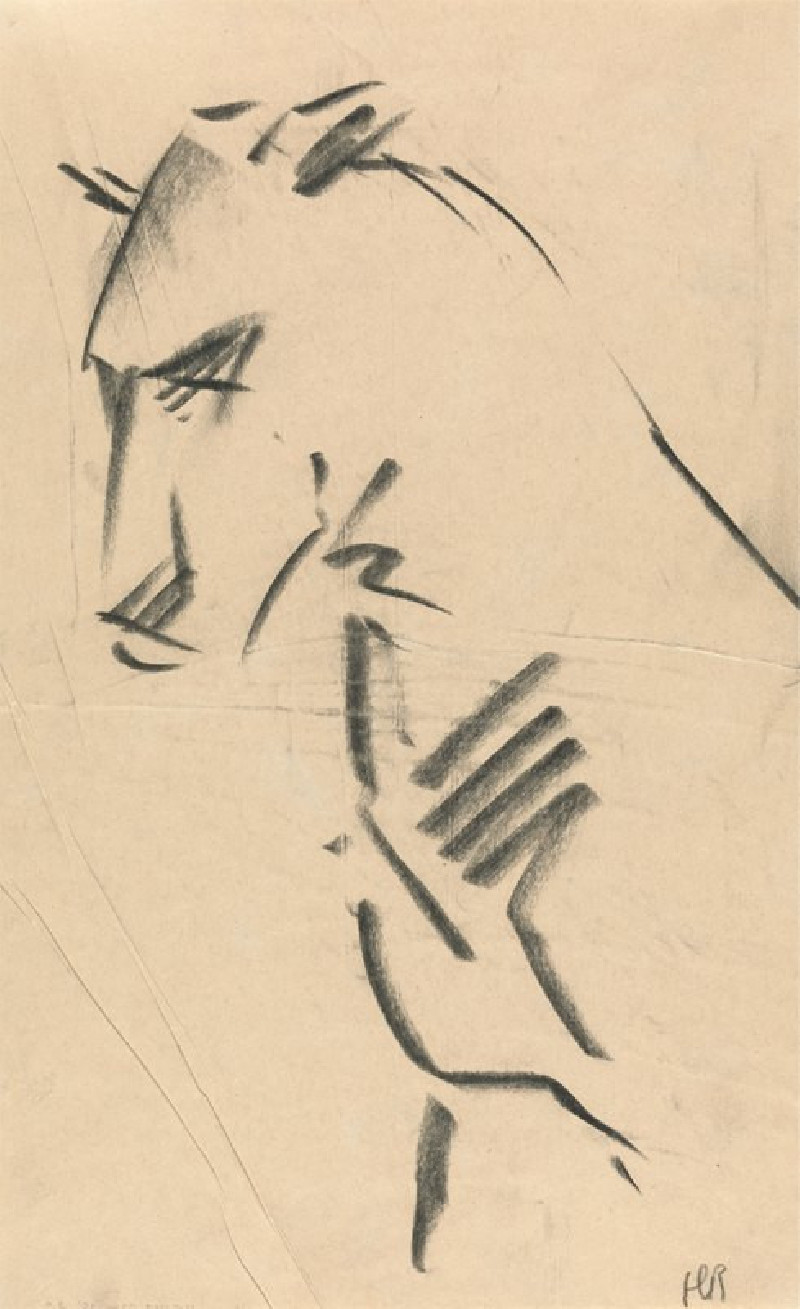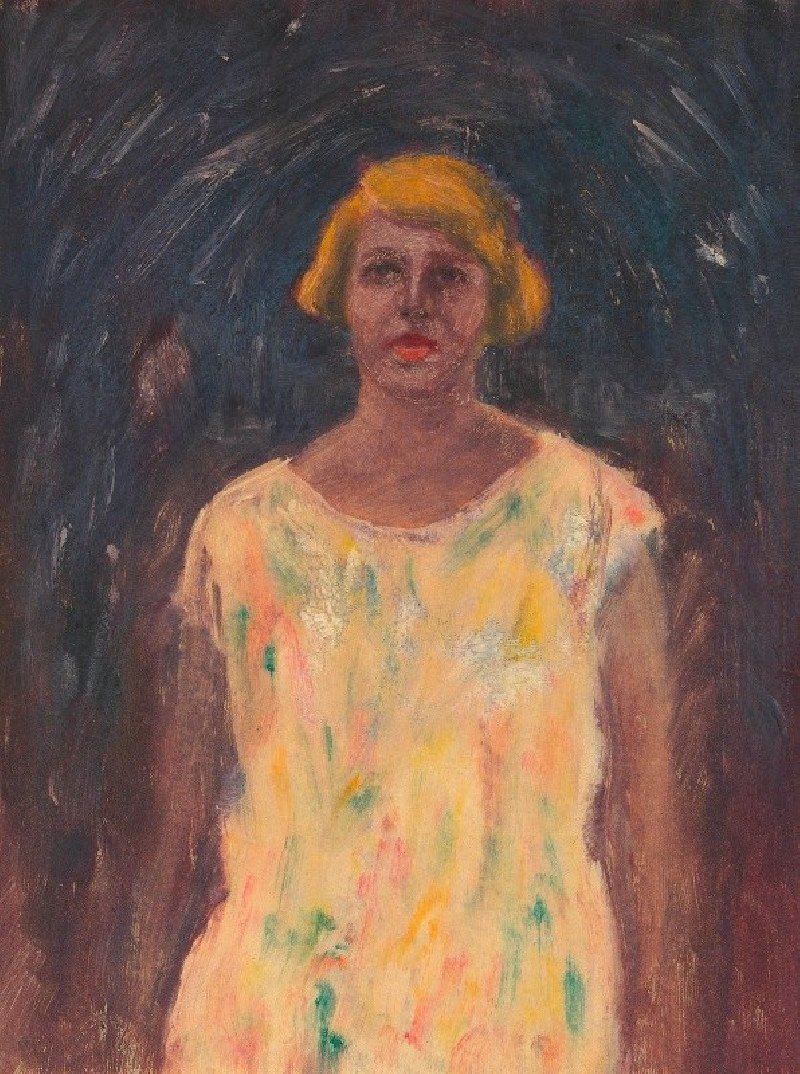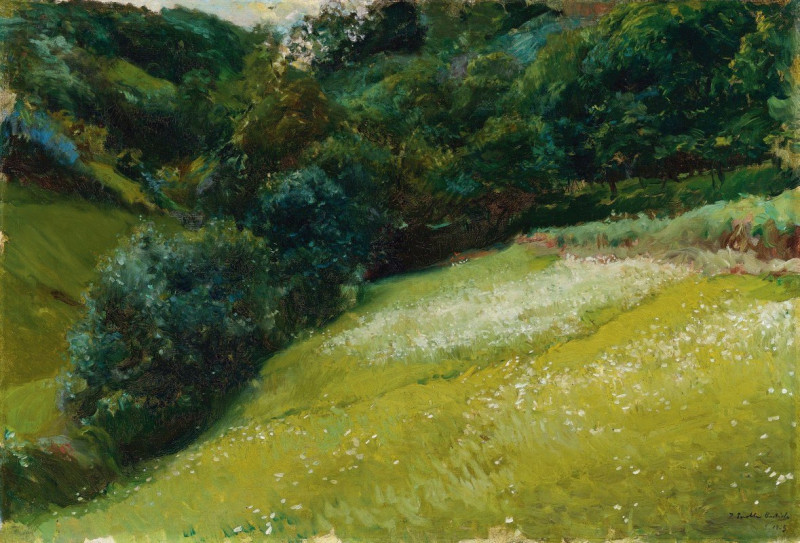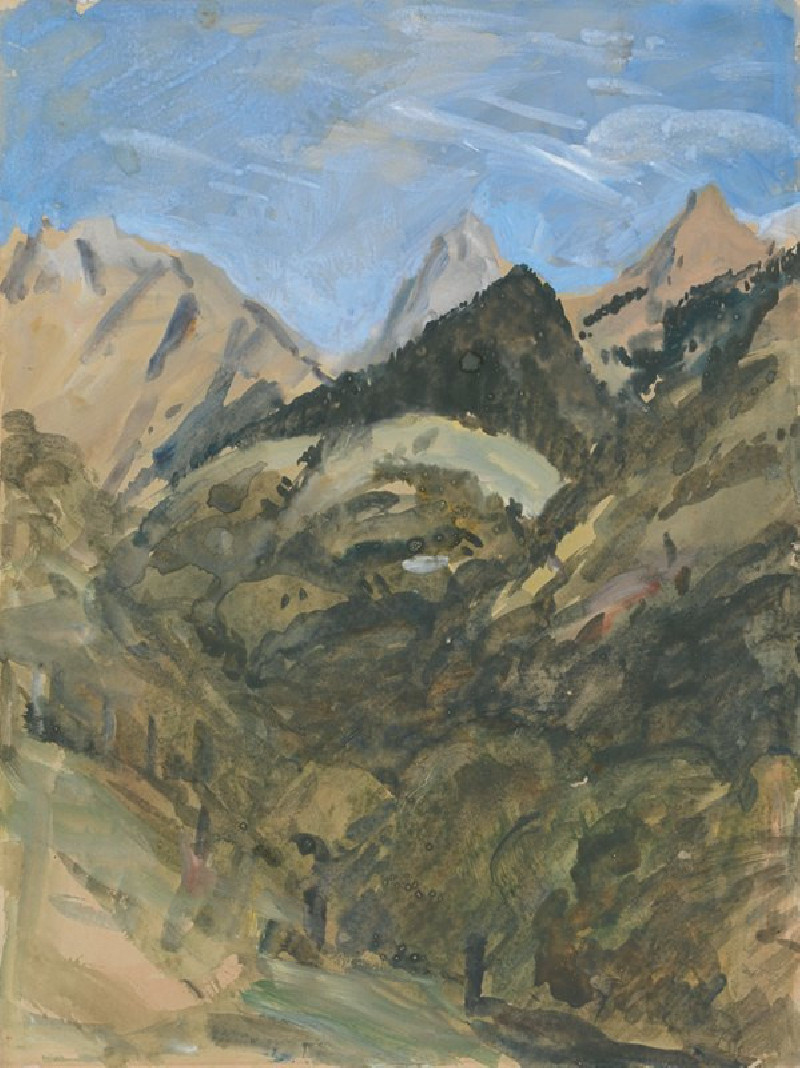Eagle Lake Viewed from Cadillac Mountain, Mount Desert Island, Maine (1850–60)
Technique: Giclée quality print
Recommended by our customers
More about this artwork
The profound beauty of nature is captivatingly eternalized in Frederic Edwin Church’s meticulous painting, "Eagle Lake Viewed from Cadillac Mountain, Mount Desert Island, Maine," crafted between 1850 and 1860. This stunning work is a testament to Church's extraordinary skill in capturing the intricate details and vibrant mood of natural landscapes.From the vantage point of Cadillac Mountain, the highest peak along the North Atlantic seaboard, the composition overlooks Eagle Lake, nestled amidst the rugged wilderness of Mount Desert Island. The painting reveals a serene moment at either dawn or dusk, as the pale sun casts a gentle glow across the sky, tinting the clouds with soft shades of pink and orange. This delicate light subtly illuminates the lake below, revealing its tranquil waters and the surrounding landscape.Church's attention to detail is manifest in the textured depiction of the foreground where sparse vegetation and rugged rocks lead the viewer's eye toward the glassy surface of the lake. The distant mountains, shrouded in mist, add a layer of mysterious allure to the scene, suggesting the vast expanses yet to be explored.As a member of the Hudson River School, Church's works often reflect a romantic appreciation of the American wilderness. In this painting, the interplay of light and shadow, combined with the profound depth and fine detail, invite the observer to pause and reflect on the sublime beauty of the natural world.
Delivery
Returns
Frederic Edwin Church (May 4, 1826 – April 7, 1900) was an American landscape painter born in Hartford, Connecticut. He was a central figure in the Hudson River School of American landscape painters, best known for painting large landscapes, often depicting mountains, waterfalls, and sunsets. Church's paintings put an emphasis on realistic detail, dramatic light, and panoramic views. He debuted some of his major works in single-painting exhibitions to a paying and often enthralled audience in New York City. In his prime, he was one of the most famous painters in the United States.

